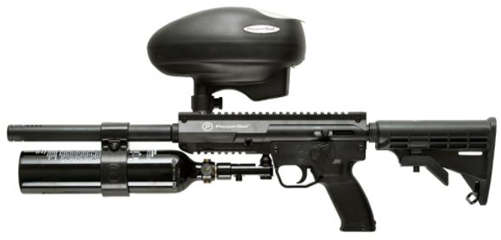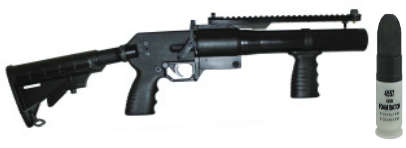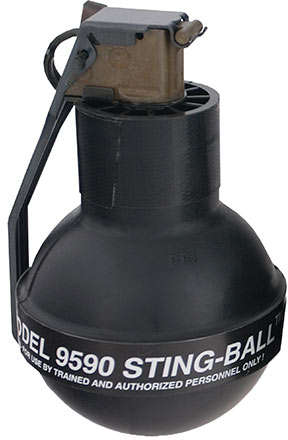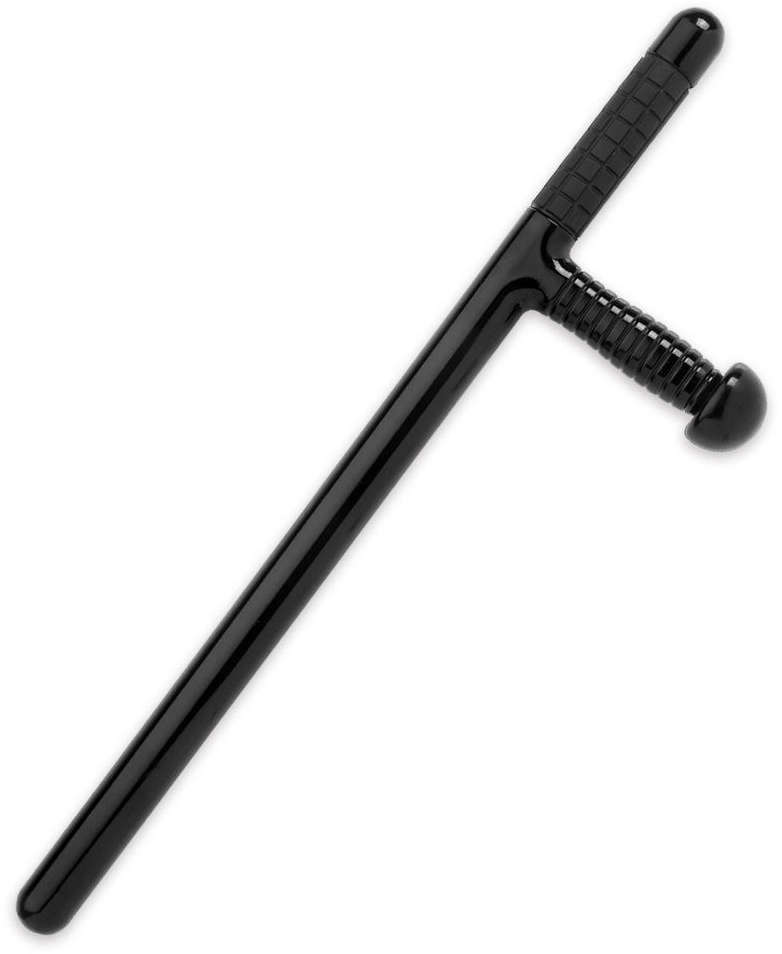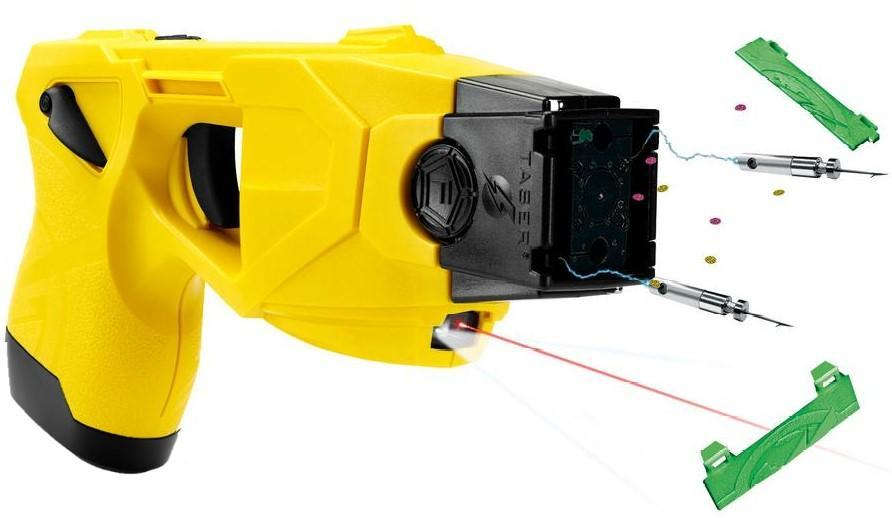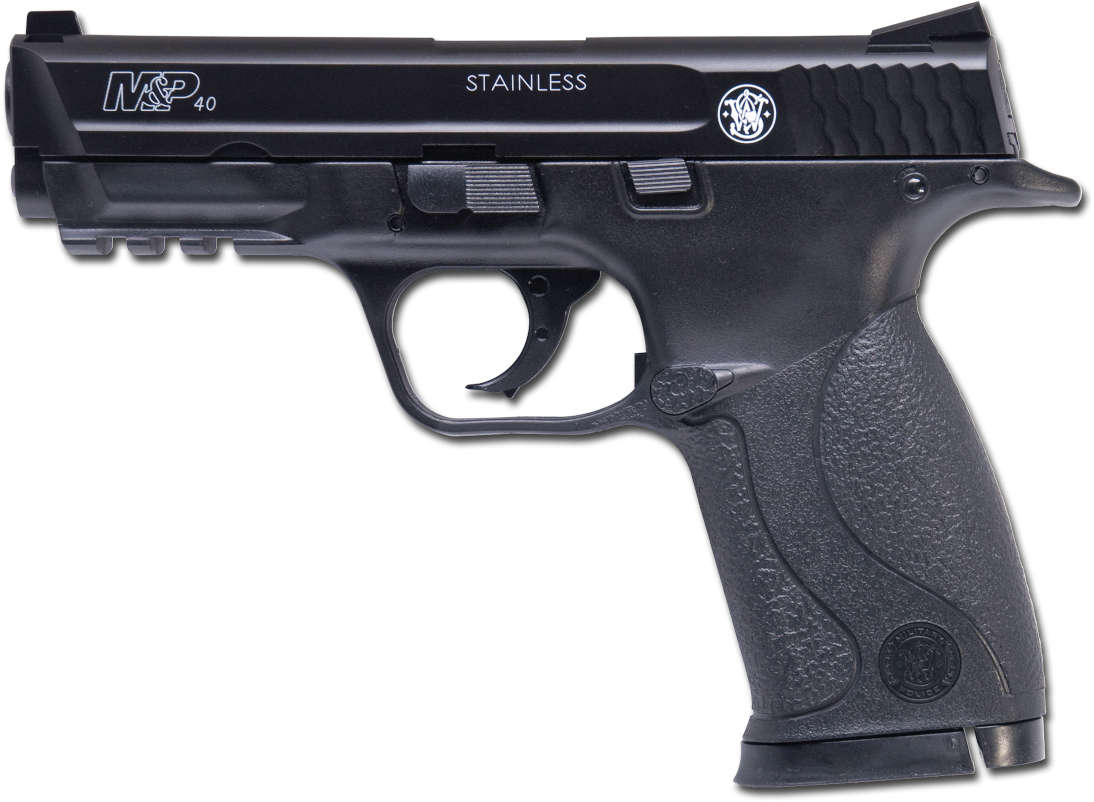Victoria Police Weapon ID guide
This guide is to help journalists, legal and human rights observers identify weapons that are currently available to Victoria Police. This is not an exhaustive list. It includes weapons used in crowd-control / public-order management contexts.
The guide is available to download as a foldable A4 leaflet here (PDF).
VKS Pepper ball firearm
A 175 shot pepper ball semi-automatic rifle; black with bright green or yellow cartridges or shoulder stock. Fires Kinetic impact projectiles (KIPs) which can be OC (capsicum) projectiles the size of marbles or; dye markers to brand people so they can be identified later.
Potential for misuse: Significant. Can be aimed to threaten or force compliance, used closely, aimed at head or can be rapid-fired into crowds.
Dangers to public: Blunt and penetrative injuries depending on range. Blindness, eye damage, bruising, burning sensation to exposed skin. Ricochet and unpredictable trajectories.
Baton-round Launcher
A 40-millimetre launcher that fires a hard squash ball KIP (pictured right) that can hit a person within 50 metres.
Potential for misuse: Significant. As threat or to force compliance. Used at close range or fired into crowds.
Dangers to public: Blunt or penetrative injuries, particularly head, neck and torso trauma, severe bruising, severe injury, permanent disability and death, (lethal at close range), blindness or eye damage. Ricochet and unpredictable trajectories.
Oleoresin Capsicum (OC- or pepper) Spray or Foam
Releases a bright orange stream of (agent OC) capsicum foam for several metres but sprays if used in a wide arc. Range depends on size of canister.
Potential for misuse: Significant. Used as threat or to force compliance. Used to clear crowds.
Dangers to public: Severe skin and eye irritation, corneal abrasions, respiratory trauma, breathing difficulties, (positional asphyxia if in confined area, restraints or AOD), transient lacrimation, blepharospasm, superficial pain and disorientation. Burning sensation lasting for 12+ hours.
Stinger Grenade
Multi-effect grenades with a loud blast, bright flash and dispersion of stinging .31 caliber pellets. Can also be configured to dispense an instantaneous cloud of irritant powder.
Potential for misuse: Significant. Will cause shock and panic in crowds.
Dangers to public: Shock and panic in crowds, blunt or penetrative injuries, particularly head, neck and torso trauma severe bruising, death, (lethal at close range), blindness or eye damage, ear damage.
Long Sidearm Baton & Extendible ASP Baton
Extendable batons are carried by all operational officers. Long batons used in crowd control contexts.
Potential for misuse: Significant. Used as threat or to force compliance. Victoria Police Operational Safety and Tactics Training (OSTT) guides against head, face kidney strikes but they often used in overhead manner.
Dangers to public: Impact trauma, strikes to the head, face, neck, abdomen, kidney region and spinal region pose high risk of serious injury, disability.
X26 Taser
Shoots two barbed darts to deliver multiple pulses of a 50,000 volt electrical current that lasts over five seconds. Camera activates when used.
Potential for misuse: Used as threat or to force compliance.
Dangers to public: Eye injuries, seizures, collapsed lung (pneumothorax), skin burns, and muscle, joint, and tendon injuries. Risk of head injury from uncontrolled falls, which has led to deaths.
Smith & Wesson M&P Semi-Automatic Pistol
Each operational officer is armed with a semi- automatic handgun. The .40 calibre gun has a 15-round magazine capacity.
Potential for misuse: Can be used to threat or to force compliance if drawn.
Dangers to public: Penetrative injuries, particularly head, neck and torso trauma, death, (lethal).
Semi Automatic AR-15 Rifle
Heavy calibre .223 weapons, 300 metre range and 30 shot magazines. For use by Public Order Response Team (PORT) as well as Special Operations Group. Locked in stations and vehicles. Should only be deployed for terrorist or ‘active armed offender’, ‘mass violence’ incident.
Potential for misuse: Should not be visibly deployed in a crowd control scenario. Could be used to threaten if it is.
Dangers to public: Penetrative injuries, particularly head, neck and torso trauma, death, risk of misfire or ricochet, (lethal).
Note: Using, drawing or threatening use of any weapon is considered a ‘use of force’ for which the police officer is both legally and organisationally accountable. Any use of force must be proportionate, reasonable under the circumstances and in accordance with specific legal requirements (eg. legislative provisions or common law), s.462A Crimes Act 1958, s 322k Crimes Act 1958 (VIC).
References
Adang, O.M.J., Mensink, J., 2004. Pepper spray: An unreasonable response to suspect verbal resistance. Policing 27, 206–219. doi:10.1108/13639510410536823
Amnesty International US, The Human Rights Impact of Less Lethal Weapons and Other Law Enforcement Equipment 2015
BMJ “Report raises concern over health risks of tasers.” ScienceDaily, 18 November 2015.
College of Policing (2020) Code of Practice on Armed Policing and Police use of Less Lethal Weapons UK
Haar RJ, Iacopino V, Ranadive N, et al. Death, injury and disability from kinetic impact projectiles in crowd-control settings: a systematic review. BMJ Open 2017
Lethal in Disguise: The Health Consequences of Crowd- Control Weapons | American Civil Liberties Union & Physicians for Human Rights (PHR) 2016
O. Dyer. Tasers. BMJ, 2015; 351 (nov17 2): h6070 DOI: 10.1136/bmj.h6070
Office of Police Integrity (OPI) Review of the Use of Force by and against Victorian police, 2009,
Victoria Police, Operational safety and the use of force. Victoria Police Manual (VPM) FF-198454 October 2019
This guide was produced by the Police Accountability Project, in association with Melbourne Activist Legal Support.
